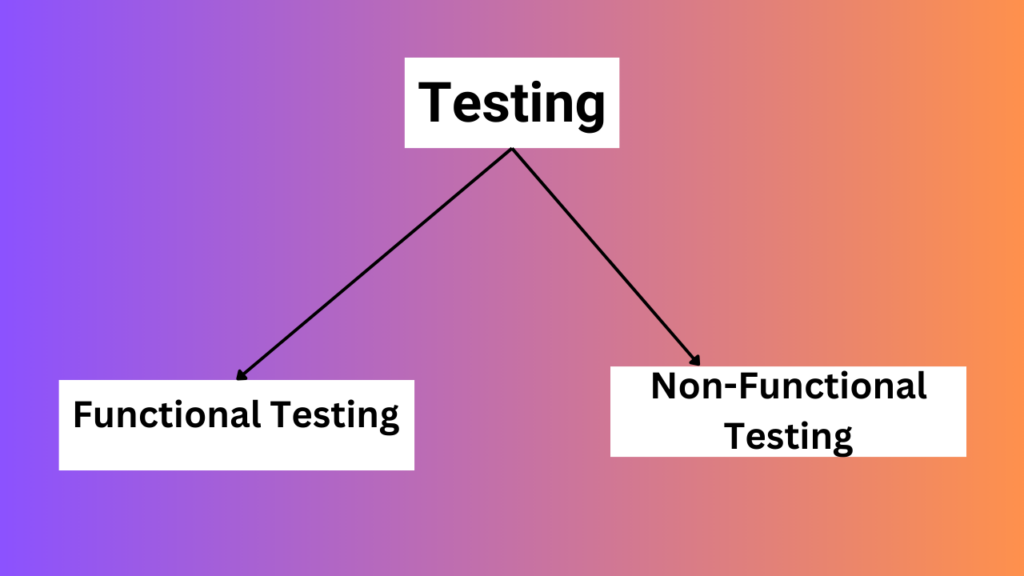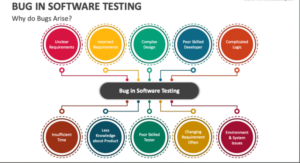Introduction: Understanding Functional and Non-Functional Testing
Software applications are an integral part of our daily lives, whether we are using banking systems, e-commerce platforms, healthcare applications, or enterprise software. With increasing digital transformation, businesses rely heavily on high-quality, reliable, and secure software to maintain customer trust and operational efficiency. A single software glitch can lead to severe financial losses, security vulnerabilities, and reputational damage. Hence, Software Quality Assurance (QA) plays a critical role in the software development lifecycle (SDLC).
Software testing ensures that an application functions as intended and performs well under different conditions. It is broadly classified into functional and non-functional testing, each serving distinct purposes. While functional testing validates whether a system meets business requirements, non-functional testing examines performance attributes like speed, security, and usability.
To build robust, high-performing applications, organizations must adopt a well-rounded QA strategy that includes both functional and non-functional testing. Whether you are a beginner in the software testing field or a seasoned QA professional, mastering these testing methodologies is essential for ensuring software quality and career growth in the industry.
This guide will provide an in-depth look at both functional and non-functional testing, detailing their differences, real-world applications, and importance in Quality Assurance Testing courses.

What is Functional Testing?
Definition
Functional testing verifies that an application performs as expected according to defined requirements. It ensures that each feature and function of the software works correctly.
Key Aspects of Functional Testing:
- Focuses on validating software functionalities.
- Ensures the system meets business logic and requirements.
- Conducted using both manual and automated testing methods.
- Involves checking input, output, UI, database, and APIs.
- Determines whether the software meets customer requirements and specifications.
- Often performed using test cases derived from user stories or requirements.
Types of Functional Testing:
- Unit Testing – Tests individual components or modules to ensure they function correctly. This is usually performed by developers before moving the application to testers.
- Integration Testing – Validates interactions between integrated components, ensuring data flow and system communication work smoothly.
- System Testing – Ensures the entire system meets requirements, verifying end-to-end scenarios and overall performance.
- User Acceptance Testing (UAT) – Confirms the software’s readiness for end-users, allowing stakeholders to verify business needs are met.
- Regression Testing – Ensures new code changes do not affect existing functionality, avoiding software bugs after modifications.
- Smoke Testing – Basic testing to check if critical functionalities work before deeper testing, acting as an initial validation step.
- Sanity Testing – A subset of regression testing, verifying whether minor changes in the code affect critical functions.
- Interface Testing – Validates the interaction between various system modules, APIs, and third-party integrations.
Real-World Example of Functional Testing
Consider an online banking application where users transfer money. Functional testing ensures:
- Users can log in securely using valid credentials.
- Fund transfers process correctly between accounts without discrepancies.
- Account balances update properly after transactions.
- Transactions reflect accurately in the statement history.
- Payment verification processes are seamless and error-free.
- User notifications and alerts function as expected.
Functional testing plays a crucial role in industries like e-commerce, healthcare, Banking, and fintech, where system functionality directly affects users’ trust and business success.
What is Non-Functional Testing?
Definition
Non-functional testing examines the software’s operational aspects, ensuring it performs well under various conditions. This includes performance, security, usability, and reliability. Unlike functional testing, which focuses on “what” the system does, non-functional testing focuses on “how” it performs.
Key Aspects of Non-Functional Testing:
- Focuses on software attributes like speed, security, and usability.
- Evaluates system behavior under stress and load.
- Helps improve the user experience by ensuring seamless interaction.
- Assesses system readiness for real-world usage conditions.
- Validates compliance with industry standards and regulations.
Types of Non-Functional Testing:
- Performance Testing – Measures response time, speed, and scalability under various conditions to ensure the system performs efficiently.
- Load Testing – Evaluates performance under expected workloads, ensuring the system functions under normal user traffic.
- Stress Testing – Tests system stability under extreme conditions, such as high user loads or data spikes.
- Security Testing – Ensures protection against cyber threats, identifying vulnerabilities that could lead to security breaches.
- Usability Testing – Verifies user-friendliness, accessibility, and ease of navigation, ensuring a seamless experience for all users.
- Compatibility Testing – Ensures the application works across different devices, browsers, and operating systems without any functional errors.
- Recovery Testing – Tests the system’s ability to recover from failures, ensuring data integrity after unexpected crashes.
- Localization Testing – Ensures the application works well in different regions, verifying translations, currency formats, and regional settings.
- Scalability Testing – Measures the system’s ability to handle an increasing number of users or data volume without performance degradation.
Real-World Example of Non-Functional Testing
For an e-commerce website during a Black Friday sale, non-functional testing ensures:
- The site handles thousands of concurrent users without crashing.
- Pages load quickly, reducing bounce rates and improving customer retention.
- Payment gateways remain secure from cyber threats and unauthorized transactions.
- The website remains accessible on different browsers and mobile devices, enhancing user reach.
- The system scales seamlessly when order volume surges.
- Backup and recovery mechanisms prevent data loss during server failures.
Why Non-Functional Testing is Critical
Non-functional testing ensures a product is stable, scalable, and secure, helping businesses avoid downtime, financial losses, and customer dissatisfaction. Industries like finance, healthcare, e-commerce, and cloud computing rely heavily on non-functional testing for seamless user experiences.ly on non-functional testing to deliver seamless user experiences and protect critical data.
Why Functional and Non-Functional Testing is Critical
Functional and non-functional testing ensures a product is stable, scalable, and secure, helping businesses avoid downtime, financial losses, and customer dissatisfaction. Industries like finance, healthcare, e-commerce, and cloud computing rely heavily on functional and non-functional testing for seamless user experiences.
The Role of Automation in Functional and Non-Functional Testing
Automation plays a significant role in both functional and non-functional testing by:
- Reducing the time and effort required for repetitive test cases.
- Enhancing accuracy and minimizing human errors.
- Providing faster feedback on software quality.
- Enabling large-scale testing across various devices and environments.
- Improving efficiency in performance, security, and usability testing.
Popular automation tools used in functional and non-functional testing include:
- Selenium – For functional and UI testing.
- JMeter – For performance and load testing.
- Postman – For API testing.
- Appium – For mobile application testing.
- Burp Suite – For security testing.
Key Takeaways:
- Functional testing ensures a software application works correctly based on business requirements.
- Non-functional testing focuses on performance, security, and usability.
- Both testing types are essential for delivering a high-quality, user-friendly product.
- Learning these concepts through QA courses online will boost your career in software testing.
Conclusion
Mastering both functional and non-functional testing is essential for a successful QA career. By implementing a comprehensive testing strategy, businesses can enhance software reliability, improve user experience, and ensure compliance with security and performance standards.
If you’re looking to build expertise in software testing, enroll in H2K Infosys’ quality assurance testing courses today. With hands-on experience, expert guidance, and real-world projects, you can gain industry-ready skills and advance your career in software testing. Whether you are new to QA or an experienced tester, our training programs will equip you with the knowledge and tools needed to excel in this ever-evolving domain. career in software testing. Ready to master functional and non-functional testing? Join H2K Infosys today!






























55 Responses
Functional testing is a process of testing all the functions of a software. it checks the quality, tests the part of functions of the whole system and focuses on testing main functions of a software.
Non Functional testing involves with the test of non functional activities of an application of the software. It checks whether the software can handle stress, or it works efficiently when too many users are logged in it. Non Functional testing is included with Performance Testing, which checks the load capacity of software and maintain the stress and also with Security Testing, which means data protection and data recovery fault management etc. So, this testing is done by Compatibility Testing, which involves with efficiency and reliability of the software for different operating systems and system environment.
The difference between Functional Testing and Non Functional testing.
Functional testing is to test all the functions of a software application and check the quality. Non Functional testing is to test on non-functional aspect of the application, for example, performance under different conditions, stress test, and how it works with too many users logged in.
The functional testing is a process of testing all the functions of a software application. It checks the quality of the software.
Wherease, Non functional testing works for non functional activities of an application
The functional testing is a process of testing all the functions of a software application. it checks the quality of the software it is a type of black box testing functional testing does not test a module or method of program functional testing system program code is not necessary.
Non-functional testing works for non-functional activities of an application. non-functional testing tests on aspects of the application software like the performance of the software.
The difference between functional and non functional testing:
Functional Testing :
The Functional Testing is a process of testing all the function of a software application. It check the quality of the software. It is a type of Black Box Testing. Functional Testing checks whether the users is comfortable with the functions of the software and can efficiently work on the screen without any difficulty.
Non Functional Testing :
The Non Functional Testing tests on Non Functional aspects of the software like the performance of software under different condition , whether the software can handle stress ,whether it works efficiently when too many users logged in etc.,
Functional testing is concerned how the system how it executes its function and quality of the software. A where as, non functional testing is evaluate the readiness of the system.
It is about the difference between Functional Testing and Non-functional testing.
Functional testing is a type of black box testing, and it focuses on the main function testing of the software. Non-functional testing works on the performance under different environment, such as load testing, data/resource/usage performance test.
The Difference between Functional and Non Functional testing:
Fuctional Testing: test each functionality of the system. In Functionality testing, every functionality of the system is tested by proving input, verifying the output and comparing the actual results with expected results.It describes what the product does and perfomed before non functional testing.
Non Functional Testing: Non Functional testing is the type of testing to check non functional activities like performance, reliability, Usability etc.unlike functional testing, It describes how the product works and performed after functional testing.
The difference between functional testing and non functional testing:
The functional testing checks the quality of the software and it identifies the functions of the software in the requirement and it works on the behavior of the program and it checks whether the user is comfortable with the functions of the software.
Non functional testing works for non functional activities of an application. It works on the non requirement aspects of the customer.
Functional testing verifies the operation of each function in the software according to the requirement specification.It does not concerned about the source code.Each functionality is tested by valid input,verifying output and comparing the actual results with expected one.
Non-functional testing is to check the non functional aspects like performance,usability,reliability etc.
Functional testing is the of testing all the functions of a software application. It is a type of black box testing. It focuses on testing main functions of a software. It checks whether the user is comfortable with the functions of the software and can efficiently work on the screen without any difficulty. The nonfunctional testing tests non functional aspects of an application, whether the software can handle stress, whether it works efficiently when too many users are logged in etc. For example performance testing.
The difference between Functional and Non-functional testing.
1) Functional testing -It is the behavior/execution of the software.It checks the quality of the software.
2) Nonfunctional testing- It is performance or usability of the software.It checks if software can handle stress, or if it works efficiently when too many users are logged in.
Functional testing is where the user tests the functions of the system derived from the functional requirements.
Non Functional testing is based on the reliability of the software and if it matches the client requirements.
Functional testing is a black box testing by QA, it tests the particular functions of the software based on the requirements. It does not test a method of the software and program code is not needed.
Non-functional testing involves more of the general performance of the software. That includes the security and compatibility of the software to different browsers and platforms. It tests for maintainability, reliability, efficiency, user friendliness and portability.
Functional testing is used to test functions of the software . It does not test method/modules of program ie we don’t need programming details. It is kind of black box testing to test quality of software.
Non-functional testing is used to test non-functional aspects of the software like to test the systems performance under different conditions , how it works when too many users are using it etc.
Functional testing:it is a process of testing all the functions of the software application.it checks the quality of the software.it does not test a module or method of a program.it tests the part of functions of whole system.testing each functionality detail and in depth with different steps and data.
Non Functional testing:Non functional testing tests on non functional aspects of application software like performance of the software under different conditions like Reliability,usability,efficiency,maintainability etc.,
Functional Testing
In functions testing system program code is not necessary.Its like black box testing.It works completely on the behavior of the program.It checks the user is comfortable,efficiency with the function of the software work in the screen without any difficulty.It checks defects and provides the better access in the application.
Non functional Testing
Non Functional works for non-functional activity of an application.Non fictional tester on non functional aspects of the application sofware like the performance of the software under different condition.where the software works efficiently
when to may user logging in.
Functional testing is a software testing where tester check an application of the software works efficiently or as per expected result e.g login/sign in/out functionality. Non functional Testing is testing in which the behavior of the software are tested e.g software/system can handle the stress of the users.
The functional testing is a process of testing all the functions of a software application.It efficiently checks the errors in the application and provides better access to defects.
The Non functional testing tests on non functional aspects of the application software like the performance of the software under different conditions, whether the software can handle stress, whether it works efficiently with too many users.
Functional Testing strictly tests all the functions in an application such as login, password, enter all are working ok as per requirements. Non- functional testing involves checking the functionality on how the application will perform under heavy load of users.
Functional testing is to check the functionality of he software application while non functional testing is to check the performance of the software, usability, whether software can handle stress, software efficiency etc.
1. Identify the difference between functional and non functional testing.
Ans1.
As we know in testing level we have differnt types of testing.
Like static testing and Dynamic testing.
Under Dynamic testing we have black box testing and whitebox testing.
Functional testing comes under Black box testing and called system testing which is done by QA.
So as we all know sytem testing in done by QA before the software is deployed to the client so that it is free from any defects.Hence meet the clients requirements.For example one of the the telecom giant of USA At&T ,wants its web page of At& T to be deveoped which have different funcionality like register,login,under my At&T to be tested before user can use it.
The funtionality is the features that can perform certain task.Like to search in At&T site we use search functionality.
So to test ecah and every functionality if its working properly we do testing and it is called functional testing.So we conduct indepth and detail testing of all the functionality of AT&T web page.
Non Functional Testing:-
In non funtional testing we test all the non-functional aspects of the software like performance,usability, reliability etc.
In performcae testing we test 1. speed/efficiency2.users 3. data, 4. Resources, 5. usage.So we perform load testing with different number of users.Identify maximum number of users required by the software.e.g online shopping sites-there are many usera so speed of the software gets effected.
Data-We perform here volume testing,we test the performance of the software with different volumes of data and identify maximum volume of data supported by the software.e.g mobile phone ,if loaded with too many application then speed gets reduces or performance gets effected.
Resources-We perform stress testing.We test the performance of the software with different number of resources and identify the number of resources required by the software. e.g Identify the number of servers(resources) required by the software.
Usage- We call it Soak testing.The test performance of the software with different number of users with volume of data and observe software performance under continuous usage.
There are other testing done to check the security,compatibility,reliability etc.
1. Identify the difference between functional and non functional testing.
Ans1.
As we know in testing level we have different types of testing.
Like static testing and Dynamic testing.
Under Dynamic testing we have black box testing and White box testing.
Functional testing comes under Black box testing and called system testing which is done by QA.
So as we all know system testing in done by QA before the software is deployed to the client so that it is free from any defects. Hence meet the client’s requirements. For example one of the telecom giant of USA At&T ,wants its web page of At& T to be developed which have different functionality like register,login,under my At&T to be tested before user can use it.
The functionality is the features that can perform certain task.Like to search in At&T site we use search functionality.
So to test each and every functionality if its working properly we do testing and it is called functional testing. So we conduct in-depth and detail testing of all the functionality of AT&T web page.
Non Functional Testing:-
In nonfunctional testing we test all the non-functional aspects of the software like performance, usability, reliability etc.
In performance testing we test
1. Speed/efficiency
2. Users
3. Data,
4. Resources,
5. Usage.
Speed/efficiency:-So we perform load testing with different number of users. Identify maximum number of users required by the software, e.g. online shopping sites-there are many users so speed of the software gets effected.
Data-We perform here volume testing, we test the performance of the software with different volumes of data and identify maximum volume of data supported by the software.e.g mobile phone ,if loaded with too many application then speed gets reduces or performance gets effected.
Resources-We perform stress testing.We test the performance of the software with different number of resources and identify the number of resources required by the software. e.g Identify the number of servers(resources) required by the software.
Usage- We call it Soak testing. The test performance of the software with different number of users with volume of data and observe software performance under continuous usage.
Q2.. Give an example for each of the non functional characteristics of the software
Ans2.
As a QA it is our job to perform system testing so that the software developed by professional software developer are free from defects and not only that it should meet the client’s requirements.
The non-functional characteristics (e.g. Reliability,usability,efficiency,maintainability and portability)
Reliability:- Means the stable behaviour of the software or consistent output of the software.
Usability:- User friendliness of the Software.The software can be used by layman i.e. user friendly.
Efficiency:- It is the Speed of the software.
Maintainability;- Means while the users is using the software they should not get any kind of technical issues.
Portability:- Software is usuable on different system e.g go to meeting some of us logged in with smart phone,laptop,Mac etc with different configuration too and it should be portable with any device irrespective of what ever configurations.
Functional testing is a type of testing in which different functions of the software is tested by putting data. While non functional testing is related to the performance of the software.
DIFFERENCE BETWEEN FUNCTIONAL TESTING AND NON FUNCTIONAL TESTING:
Functional Testing: This testing check all the functions of the software. It test the certain input data and their results. It does not test method of the software and this testing does not require any code for test. It
Non functional Testing: This kind of testing test the software is able to work in differ environment or can handle the stress. Software can perform with multi users or not these kinds of tests are done in this testing.
Difference between Functional and Non Functional Testing:
The functional testing is process of testing all the functions of the software application. Functional testing is black box testing.
In this testing software program code is not necessary. It checks the errors in the application and provides access to the defects.
And the Non Functional testing works on non functional activities of an application. It tests the performance of software under different conditions like stress and load etc…. Non Functional testing should perform after functional testing is done.
functional testing : This type of testing comes under black box testing where the functionality of the software is tested.it doesn’t require any code to test .
Non functional testing: this type of testing test the non functional aspect of the software like performance, reliability , usage .
There are two types of software testing
1. Functional Testing : where all the functions of a software are tested. It is a type of black box testing. This testing doesn’t need code & works on the behavior of the program. It checks whether the user is comfortable with the functions of the software and can efficiently work on the screen without any difficulty.
2. Non Functional Testing: which tests non functional aspects of the application software like the performance of the software under different conditions, whether the software can handle stress, whether it works efficiently when too many users are logged in etc.
The functional testing is a process of testing all the functions of a software application. it checks the quality of the software it is a type of black box testing functional testing does not test a module or method of program functional testing system program code is not necessary.
Non-functional testing works for non-functional activities of an application. non-functional testing tests on aspects of the application software like the performance of the software.
Functional testing is type of a Back Box testing that focuses on testing main functions of a software. It checks whether the user is comfortable with the functions of the software and can efficiently work on the screen without any difficulty. It efficiently checks the errors in the application and provides better access to defects. In functional testing program code is not necessary. It completely works on the behaviour of the program. Example : Given the extension code of the phone number output : it displays the list of countries.
Non Functional Testing: Non functional testing focuses on non functional aspects of the application software like the performance of the software under different conditions, whether the software can handle stress, whether it works efficiently when too many users are logged in etc. working on the non requirement aspects of the customer is what is called as non functional testing.A good example of non-functional test would be to check how many people can simultaneously login into a software.
Functional testing is a type of testing which verifies that each function of the software application operates in conformance with the requirement specification. This testing mainly involves black box testing, and it is not concerned about the source code of the application.
Non-functional testing is a type of testing to check non-functional aspects (performance, usability, reliability, etc.) of a software application. It is explicitly designed to test the readiness of a system as per nonfunctional parameters which are never addressed by functional testing.
A good example of non-functional test would be to check how many people can simultaneously login into a software.
Non-functional testing is equally important as functional testing and affects client satisfaction.
1. Identify the difference between functional and non functional testing
Functional testing :
It is a type of testing which verifies that each function of the software application operates in conformance with the requirement specification. This testing mainly involves black box testing, and it is not concerned about the source code of the application.Every functionality of the system is tested by providing appropriate input, verifying the output and comparing the actual results with the expected results. This testing involves checking of User Interface, APIs, Database, security, client/ server applications and functionality of the Application Under Test.
2.Non-functional testing :
It is a type of testing to check non-functional aspects of a software application like performance, usability, reliability, maintainability, portability etc. It is performed after the functional testing. It focusses on customer’s expectation. It is done to validate the performance of the software. It describes how the product works
2. Give an example for each of the non functional characteristics of the software.
Example for Maintainability:
For an application with aniticipated load of around 1000 users. We will test to determine how the application will behave at the expected peak load and if the software does not pose any technical issues while the users use the software.
Example for Reliability:
For an application with anticipated load of 1000 users we will run the test with for 1200 users and check if the application is robust enough to not fail meaning it should provide the stable outcome without any ambiguity.
Example for Efficiency:
For an application with multiple users we will run the test with for each user and check if the software have a low response time i.e. it is quick in responding to the user requests.
Example for User friendly:
For an application with multiple users we will run the test to calculate the learning time ie. we will check if the software is easy to learn and handled by the common user.
Example for Portability:
For the developed software, we will browse and use it on various devices like computers, smart phones, tablets with variety of operating systems, browsers, processors, memory, user settings etc. The portable software is usable on all the different devices used by users.
The difference between functional and non-functional testing:
Functional testing is a testing all the functions of a software application, or the quality of the software itself. It tests functions of the whole system, but doesn’t test a module or method of a program. This type of testing works on the behavior of the program, so system program code is not necessary.
Non-functional testing tests the performance of the software under various conditions, such as; if it can handle stress, if it functions properly when too many users are logged in, etc.
Maintainability: A social media site should be up and running with no issues
Reliability: When a link is tab is clicked on in a social media page, it should open with a positive outcome
Efficiency:A website shouldn’t slow me down by having issues.
User friendly: As I navigate a website, it should not take more steps than needed to reach my destination
Portability: I should be able to open my bank account on my phone, tablet, or computer on a variety of different browsers.
1) Functional testing revolves around the functional aspects of the software system and how efficiently the system executes its functions. Non functional testing tests the productivity, quality, stress of the system, specifically from the user’s perspective. For example, functional testing might reveal the test for inputting data and its expected behaviour, whereas non-functional testing reveals the time taken for a document to get saved. Therefore, non-functional testing demonstrates how the system behaves as compared to what the system is expected.
Functional testing measures functional requirements in simple yes/no terms as either present or absent in the completed system. Non functional testing measures non functional requirements on some scale or interval.
2) The following are examples of the different non functional characteristics of the software:
• Maintainability – The software should be easy to maintain, update so that the user can work without any hindrance. Ex: There are several quiz and gaming apps which are updated and any bugs or defects in the apps are fixed in the background constantly without the user’s knowledge. If the app keeps having problems the user will lose interest in the app.
• Reliability – The software should be reliable and consistently provide the same results.
• Efficiency – If a search engine takes too much time to deliver results, the user will be frustrated. Hence a software should have a low response time ie be quick in responding to user queries.
• User Friendly – The software should be easy to navigate and a user must not spend a lot of time searching for any item on the site. This holds especially true for websites of e commerce giants like Amazon, Walmart, or banks and online travel booking sites.
• Portability – A software that is portable can be used on different devices like computers, smart phones, tablets with variety of operating systems, browsers, processors, memory, user settings etc. Eg: several educational softwares can be browsed on websites as well as smartphones like abcmouse.com or khanacademy.com
Difference Between Functional and Non-Functional Testing
Functional testing is done based on the business requirement. Non- functional testing is done based on the customer expectation and Performance requirement. It tests whether the actual result is working according to the expected result.
1. Identify the difference between functional and non functional testing.
Functional Testing is a process of testing all the functions of a whole Software system application. It checks the quality, tests the part of functions of the whole system and focuses on testing main functions of a software.
Non Functional Testing involves with the test on non functional aspects of the application software like the performance of the software under different conditions, such as stress, security, usability, efficiency and reliability, maintainability, user friendly of the software.
2. Give an example for each of the non functional characteristics of the software
Example of each non-functional characteristics of the software:
Performance testing: Ex: Bank account working well when large number of user perform balance add or transfer at same time.
Security testing: Ex: SMS /Email alerts on change of bank balance.
Compatibility testing: Ex: Software working efficiently on different computers, browser, OS etc.
Difference between functional and non functional testing
1. Functional testing is a process of testing all the functions of a software, where as non functional testing works on non functional activities of an application.
2. Functional testing is a process which directly tests the functions to the software. It involves identifying the functions of software in the requirement and creation of certain input data based on functional requirement of a particular software where as non functional testing tests on non functional aspects of the application software like the performance of the software under different conditions,whether the software can handle stress, whether it works efficiently when too many users are logged in.
Functional testing is a type of blackbox testing technique that checks the functionality of the software application is working as per the client requirements, while non functional testing checks that the non functional aspects of the system like performance, stress, usability, security, compatibility, portability etc., meet IT standards and the client requirements.
1)Functional Testing:
Functional testing is a process of testing all the functions of a software application.
It efficiently checks the errors in the application and provides better access to defects.
Non Functional Testing:
The Non-functional testing tests on non-functional aspects of the application software like the performance of the software under different conditions, whether the software can handle stress, whether it works efficiently when too many users are logged in etc.
Functional testing
1.It tests What the product does. It checks the operations and actions of an Application.
2.Functional testing is done based on the business requirements .
3. It tests whether the actual result is working according to the expected result.
4.It is testing the functionality of the software.
Functional testing has following type
. Unit testing
. Integrated testing
. System testing
. User Acceptance testing
EX: Login Page must show User Name and Password text box
Nonfunctional testing
1.It checks Behavior of an application.
2.Nonfunctional testing done based on the customer expectation and performance requirements.
3.It checks the response time and speed of the software under specific condition.
4.It is testing the performance of the functionality of the software.
Nonfunctional testing Include
. Performance testing
. Load testing
. Volume Testing
. Stress testing
. Security testing
. Installation testing
. Recovery testing
EX: Test how fast login page is loading
Functional Testing: It is a process of testing all the functions of a software application. It checks the quality of the software. Functional testing does not test a module or method of a program. It tests the part of functions of the whole system. It completely works on the behavior of the program.
Non Functional Testing: It works for non functional activities of an application. Non functional testing tests on non functional aspects of the application software like the performance of the software under different conditions, whether the software can handle stress, whether it works efficiently when too many users are logged in etc. working on the non requirement aspects of the customer is what is called as non functional testing.
Difference between Functional and Non functional testing.
Functional Testing.
In functional testing System Program code is not necessary. It completely works on the behaviour of the program. Functional testing focuses on testing main functions of a software. It checks whether the user is comfortable with the functions of the software and can efficiently work on the screen without any difficulty. It efficiently checks the errors in the application and provides better access to defects.
Non functional Testing
Non Functional testing works for non functional activities of an application. As we know that functional testing a process which directly tests the functions related to the software, the Non functional testing tests on non functional aspects of the application software like the performance of the software under different conditions, whether the software can handle stress, whether it works efficiently when too many users are logged in etc.
The functional testing is a process of testing all the functions of a software application. It efficiently checks the errors in the application and provides better access to defects.
The Non functional testing tests on non functional aspects of the application software like the performance of the software under different conditions, whether the software can handle stress, whether it works efficiently with too many users.
The functional testing is a process of testing all the functions of a software application. It efficiently checks the errors in the application and provides better access to defects.
The Non functional testing tests on non functional aspects of the application software like the performance of the software under different conditions, whether the software can handle stress, whether it works efficiently with too many users.
Software Testing Types:
Functional Testing
Non- functional testing
Functional testing involves identifying the functions of software in the
requirement and creation of certain input data based on functional requirement of a
particular software. Functional testing does not test a module or method of a program.
It tests the part of functions of the whole system.
It is a type of black box testing,functional testing System Program code is not necessary
eg: Store locator in Verizon, its a functional testing.
Non-functional testing is the testing of a software application or
system for its non-functional requirements: the way a system operates,
rather than specific behaviors of that system.
Difference between functional & non functional testing:
-Functional testing verifies each function/feature of the software whereas non functional testing verifies the aspects like performance, usability, reliability, load etc.,
-Functional testing can be done manually whereas non functional testing is hard to perform manually.
-Functional testing is based on customer requirements whereas non functional testing is based on customer expectation.
-Functional testing describes what the product does whereas non functional testing describes how the product does.
-Functional testing is performed before non functional testing.
Functional Testing:
Functional testing is testing the function/feature of the software according to the customer requirements.
Non functional testing:
Non functional testing verifies how the software behaves under certain circumstances. it tests the performance, usability, reliability, load etc.,
Functional testing :-The functional testing is a process of testing all the functions of a software application . Functional testes the part of functions of the whole system . It is type of black box testing .
Non Functional Testing :- Non Functional testing works for non functional activities of the application .Non functional testing work on the non requirement aspects of the customer is what is called as non functional testing .